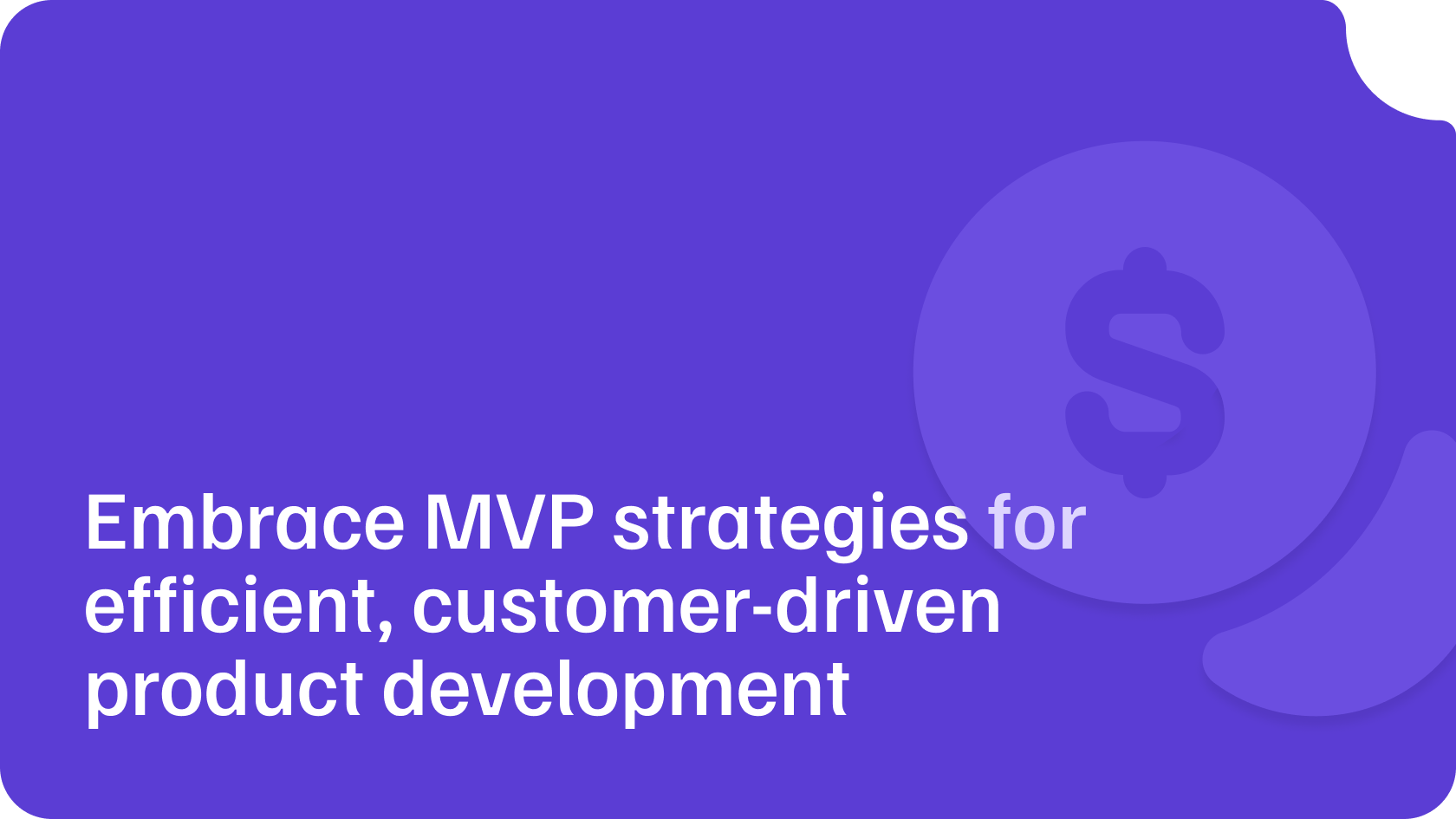The creation of a Minimum Viable Product (MVP) represents a pivotal milestone where vision starts to morph into reality, albeit in its most elemental form.
The philosophy behind an MVP is grounded in the lean startup methodology, which emphasizes the importance of efficiency, agility, and customer feedback in the product development cycle.
This article delves into the art and science of building an MVP, offering startups a compass to navigate this journey with lean strategies that ensure resourcefulness and market relevance.
The bedrock of MVP development
Understanding the MVP philosophy
- What makes an MVP?
An MVP is essentially the simplest version of your product that allows you to release it to market. It must have enough value that people are willing to use it or buy it initially and provide feedback for future development. The MVP concept, popularized by Eric Ries in "The Lean Startup," focuses on learning about customers with the least effort.
- Success stories: MVPs in the wild
Consider the case of Dropbox, which started as a simple video demonstrating the product's concept to validate customer interest.
Airbnb's MVP was a basic website offering short-term lodging during a large conference in San Francisco.
These examples underscore the MVP's role in validating business hypotheses with minimal resources.
Lean strategy: Principles and practices
The build-measure-learn loop
At the heart of lean strategies is the Build-Measure-Learn feedback loop. Startups should first build a minimum version of their product, measure how it performs in the real world, and learn from this experience. This iterative process ensures that product development is closely aligned with market needs.
Validated learning: Prioritizing customer feedback
Validated learning about customers is crucial. It involves launching the MVP, gathering customer feedback, and then iterating based on that feedback. This approach helps startups avoid building features or products that customers do not value.
Charting the course: Steps to building your MVP
Ideation and market research

The first step in MVP development is to identify a clear problem that your target market experiences and to conceptualize a solution. This stage should involve extensive market research, including surveys, interviews, and competitor analysis, to validate the problem and ensure that the proposed solution meets a genuine need.
Designing the MVP
- Feature prioritization: The MoSCoW method
Once you have a clear understanding of the problem and your proposed solution, the next step is to prioritize features using a method like MoSCoW (Must have, Should have, Could have, Won't have this time). This helps in focusing on what is absolutely essential for the MVP.
- Prototyping and user testing
Before full-scale development, creating a prototype can be invaluable. This can be as simple as wireframes or a mock-up. User testing with this prototype allows for early feedback, helping refine the MVP's design before coding begins.
Development and launch
- Agile development: flexibility and speed
Using agile development methodologies enables rapid and flexible MVP development. Agile teams work in sprints, allowing for frequent reassessment of the product's direction based on ongoing feedback and testing results.
- MVP launch strategies: Finding the right channels
Choosing the right channels for your MVP launch is crucial. This could involve launching on platforms where your target customers are most active or using strategies like beta testing groups, landing pages for sign-ups, and leveraging social media for early adopter engagement.
Beyond the launch: Iteration and growth
After launching the MVP, the focus shifts to collecting and analyzing user feedback and usage data. Tools like Google Analytics, customer surveys, and direct user interviews can provide invaluable insights for iterating on the product.

Based on the feedback and data collected, startups should prioritize new features and improvements, continuing to iterate on the product in alignment with the Build-Measure-Learn loop. This ensures that the product evolves in response to real user needs and market demand.
The lean journey of MVP development
Building an MVP is a journey of discovery, learning, and adaptation. By embracing lean strategies, startups can navigate this process with agility and efficiency, ensuring that their product not only meets market needs but does so with minimal waste. The path from MVP to a fully-fledged product is paved with feedback loops, iterations, and continuous learning. Startups that master this process can turn their initial visions into successful, market-tested products, ready for scaling. In the end, the MVP is not just a product development stage but a philosophy of entrepreneurial growth—a testament to the power of lean methodologies in transforming ideas into viable, thriving businesses.
Stay tuned,
yours Peoplr.








